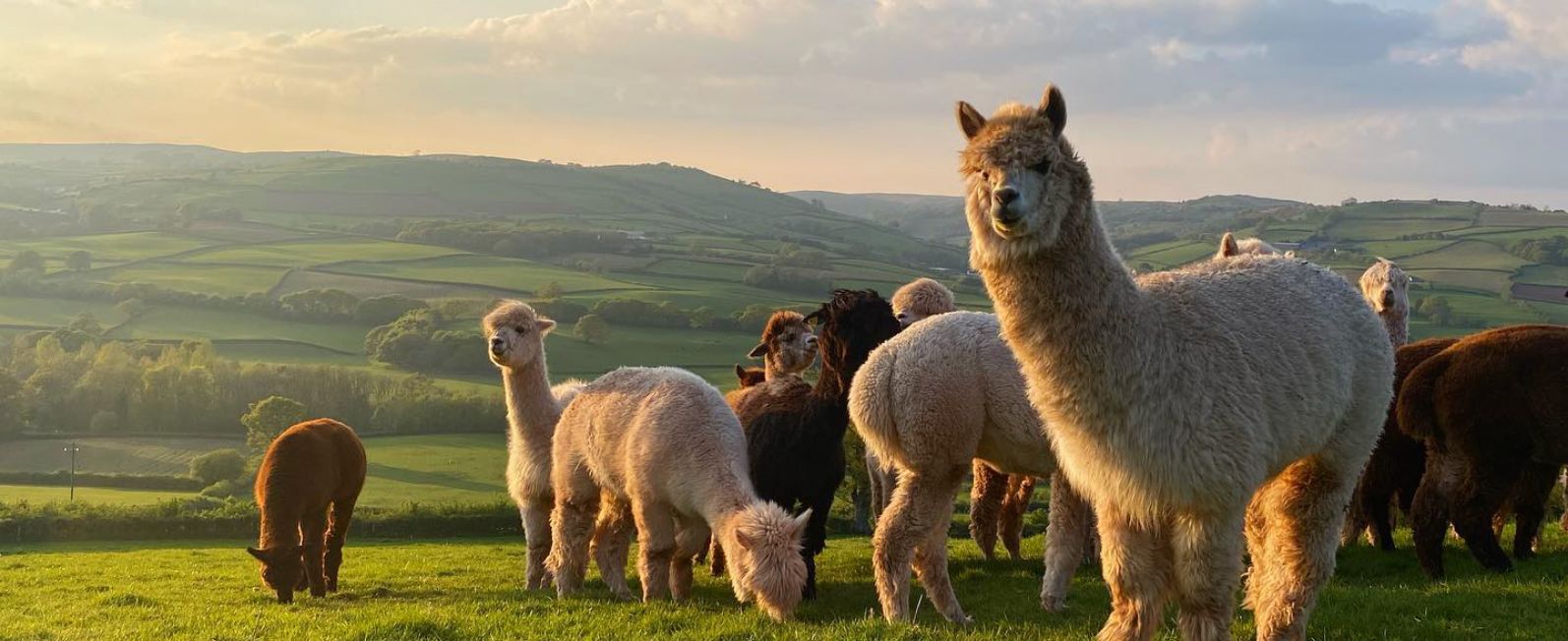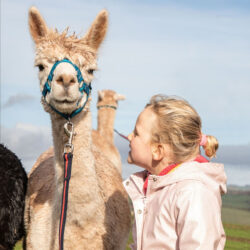Are Alpacas Friendly – What to Expect on an Alpaca Walking Experience
February 13, 2023 11:25 am Leave your thoughts
At Alpaca My Boots, we’ve been providing a fantastic animal therapy and walking experience for several years. We are pleased to invite our customers to one of the most stunning places to visit in the Brecon Beacons National Park There’s nothing like walking through the countryside of Wales, accompanied by cute and fluffy companion.
Some of the most frequent questions we’re asked is about the behaviour of our alpacas. As they are not a native animal to Britain, it is understandable that people are curious to know how these stunning creatures behave. Our beautiful alpacas are friendly and affectionate by nature, and throughout our years of guided walks, this has never changed.
There is unfortunately some misinformation, resulting in bad publicity about their behaviour. This can be the result of confusion between alpacas and their closely related cousin, the easily irritable llama. This is understandable, as to the untrained eye, alpacas and llamas look very alike. But if you put them side by side, you’d notice the differences straight away.
To help dispel these misconceptions, we’re answering some of your questions about how alpacas behave, and what to expect of them when you are on an alpaca walking experience. Each member of our herd has their own distinct personality, so there may be some quirks here or there. But rest assured that our animal therapy companions don’t have a mean bone in their body.
BUY A GIFT VOUCHER
Book Tickets Today
Are Alpacas friendly?

Alpacas are herd animals and need companionship, they get very sad if kept in isolation. Our alpacas have been halter-trained and are very comfortable around humans (especially if they have some alpaca food with them!). They are happy to be stroked on their necks and shoulders, but do not like to be touched on their face or head.
Take Geoffrey for example (pictured above), he’s our oldest alpaca at 19 years and is nothing but a responsible and sweet gentle giant, especially around children. Trust us, he’s a great family friendly companion when taking you around one of the places to visit in Brecon Beacons.
Unfortunately, predator animals such as dogs and foxes can easily scare alpacas. That’s why we can’t allow people to bring their pet dogs, even if they’re calm and sweet.
Do Alpacas Bite, Does it Hurt?
Alpacas have a row of somewhat blunt incisors on the bottom jaw at the front of their mouth. These are designed to nibble at grass, and not to nip at people they don’t like. It’s super unlikely that an alpaca will try to bite anyone using these teeth.
Alpacas are not predator animals, they’ll want to run away at the first sign of trouble instead of using their bite. That’s because their grazing teeth can’t compare to those from the big cats that hunt them in the wild. An alpaca bite would most likely cause a swelling or bruise if it did happen.
At the end of your trekking in Brecon Beacons trip, you’ll be given the opportunity to hand feed your walking partner with a treat. If you hold the food as the guide instructs you to, you won’t get nipped accidentally. You can always watch us hand feed the alpacas if you don’t feel up to it, but you’ll be missing out on a fantastic way to bond with your walking partner.
Do Alpacas Spit?
Alpacas can spit, but just because they can, doesn’t mean they will. Our beautiful alpacas are friendly and relaxed, spitting just isn’t part of their normal behaviour. Unlike when humans spit, it’s not a sign of aggression or bullying.
An alpaca only really spits if you are doing something they really don’t like, such as stealing their food, giving them medicine, or intruding their personal boundaries too much. We can tell if an alpaca is unhappy or distressed by its body language – especially the ears and tail. Generally, if the ears are pinned right back or the tail is lifted, this is a sign of discontent or potential danger. They also make a high-pitched screech (sounds a bit like a donkey braying) if faced with danger and to warn the rest of the herd.
Spitting is another example case of alpacas and llamas being mixed up. Llamas are more solitary creatures and are a lot easier to agitate than an alpaca, which is why they have their reputation for spitting.
If you are on one of our alpaca walking experiences, your guide will let you know if they notice your alpaca is feeling distressed. It’s very unlikely that this should happen. Before you start your trek, we always talk you through the basics of alpaca handling and how to treat them with kindness. As long as you stick to these essentials, both you and your alpaca partner will have a great time trekking in Brecon Beacons.
Are all Our Alpacas Are Trained for Trekking in Brecon Beacons’ Countryside?

Some of our boys like King George love to trek with humans of all ages across the beautiful Welsh countryside. Others don’t like the walk as much, but that’s ok, they prefer to participate in our Wellness Wednesday experience instead.
Every alpaca that goes on a walk has been acclimated to wearing its collar and rein. They’ve been practising the route we take around our corner of the Brecon Beacons many times, so there’s nothing unfamiliar that could upset them.
We hope that this has answered all of your questions about how alpacas behave. So if you are looking for a great walking experience unlike any other in the local area, click the button below and find when our next trek sets off.
BOOK YOUR TREK TODAY
BUY A GIFT VOUCHER
Categorised in: Uncategorized
This post was written by Louise Bishop



